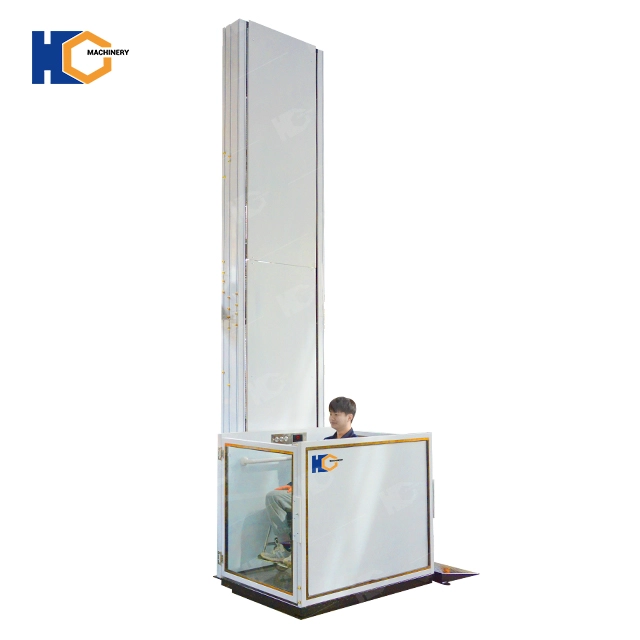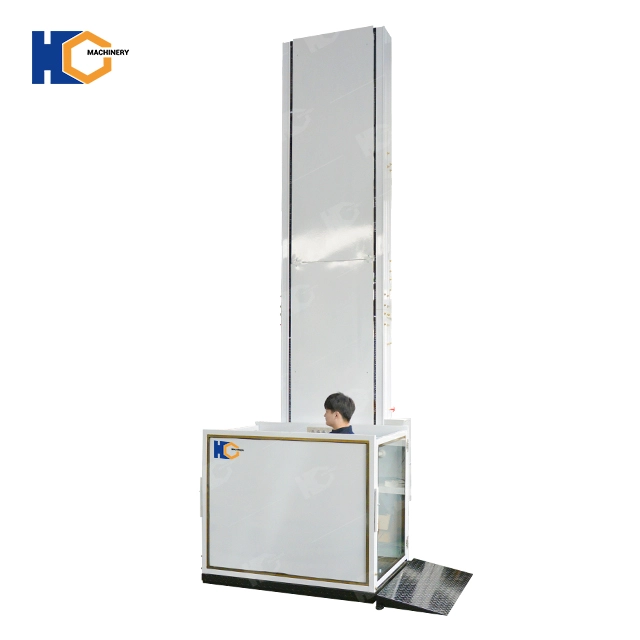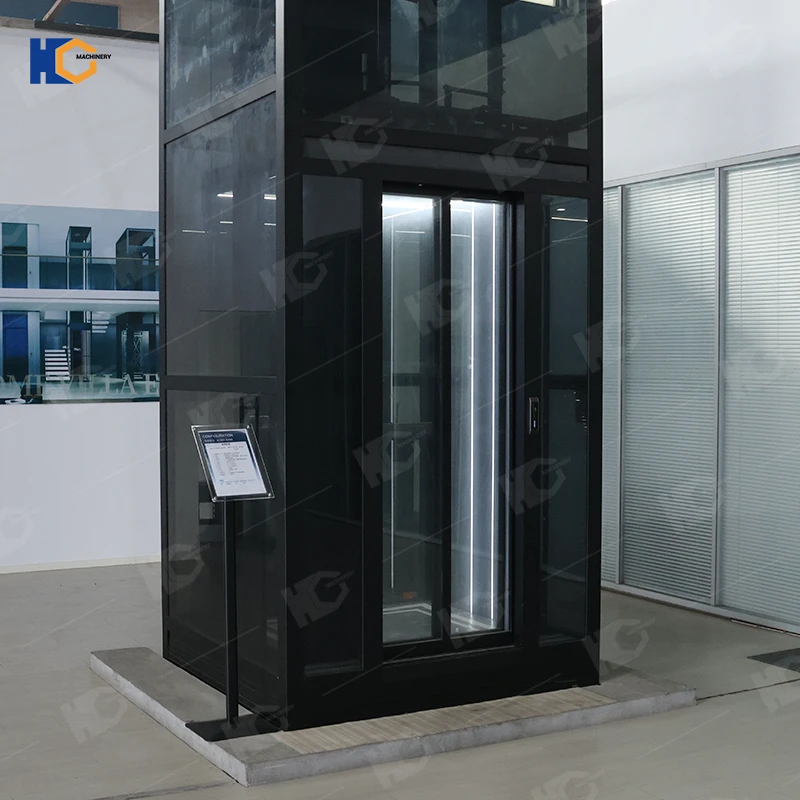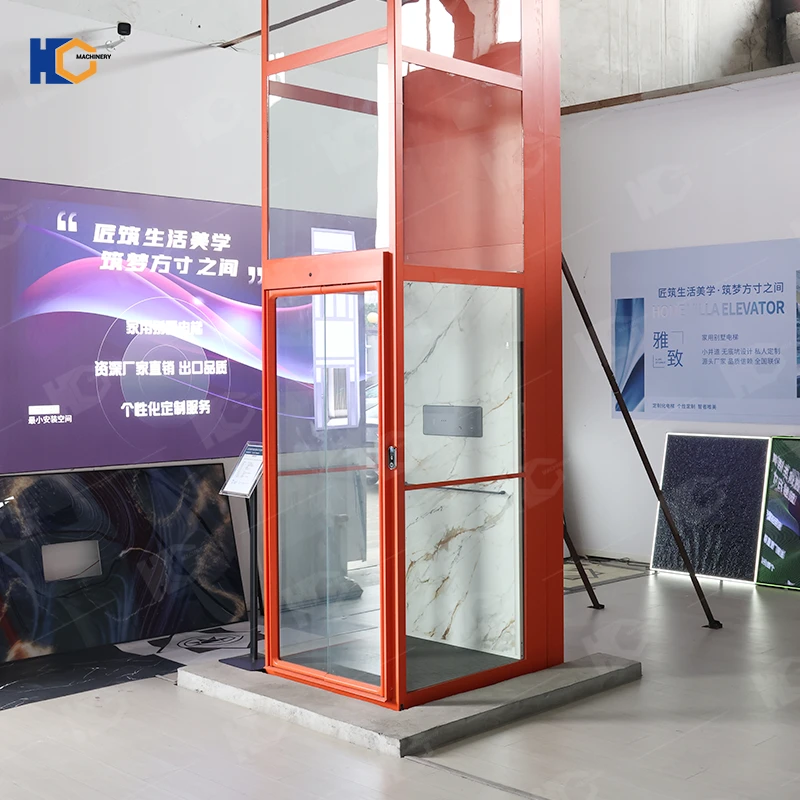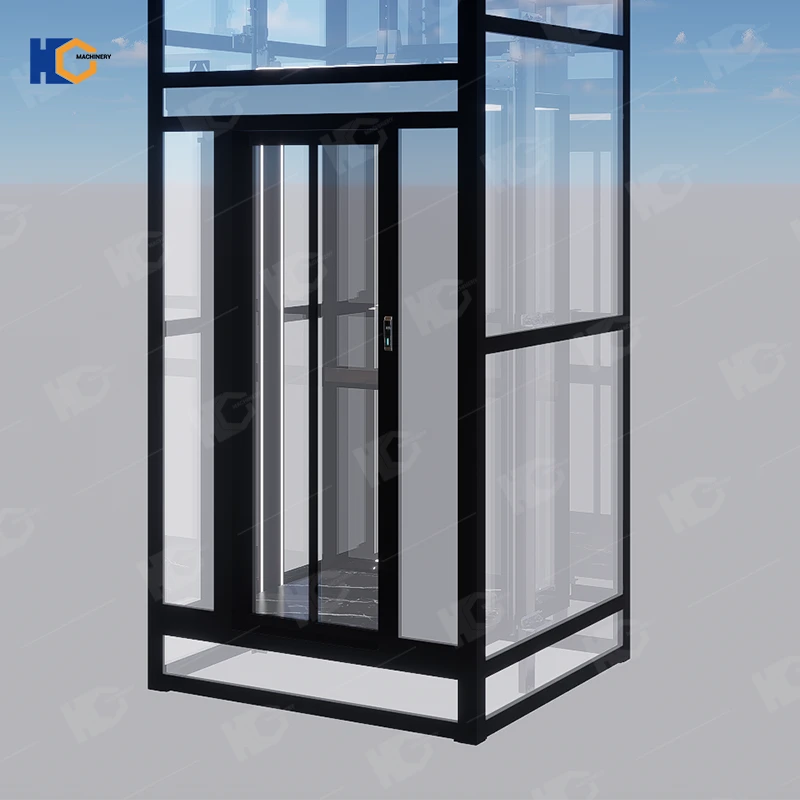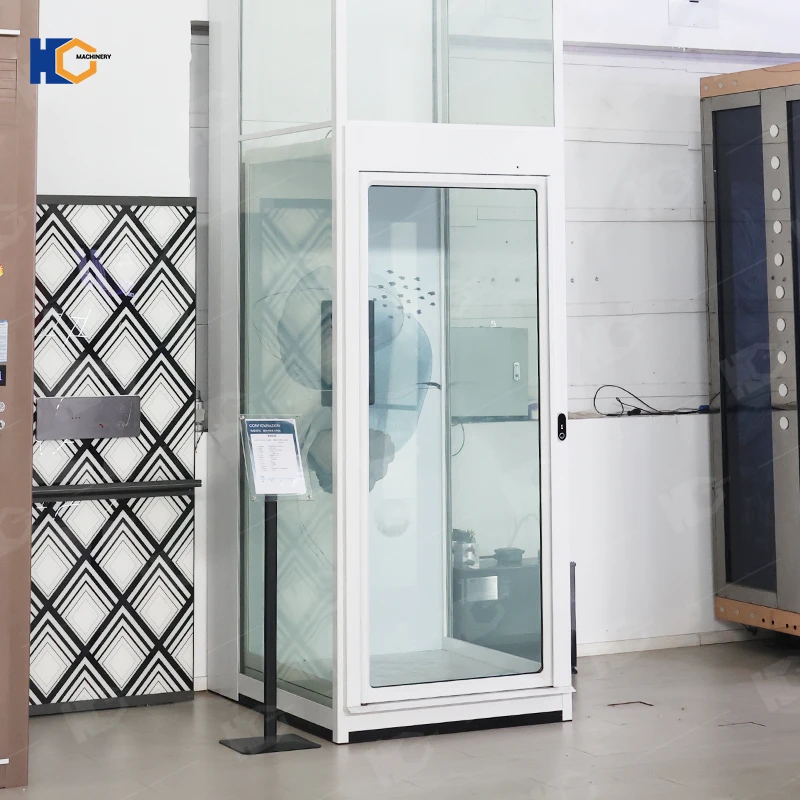For individuals with disabilities, home lifts offer a means of navigating between floors with ease, enhancing both their independence and quality of life. This article will explore the various specifications of home lifts for the disabled, provide an overview of pricing, and discuss the customization options available to suit individual needs and home environments.
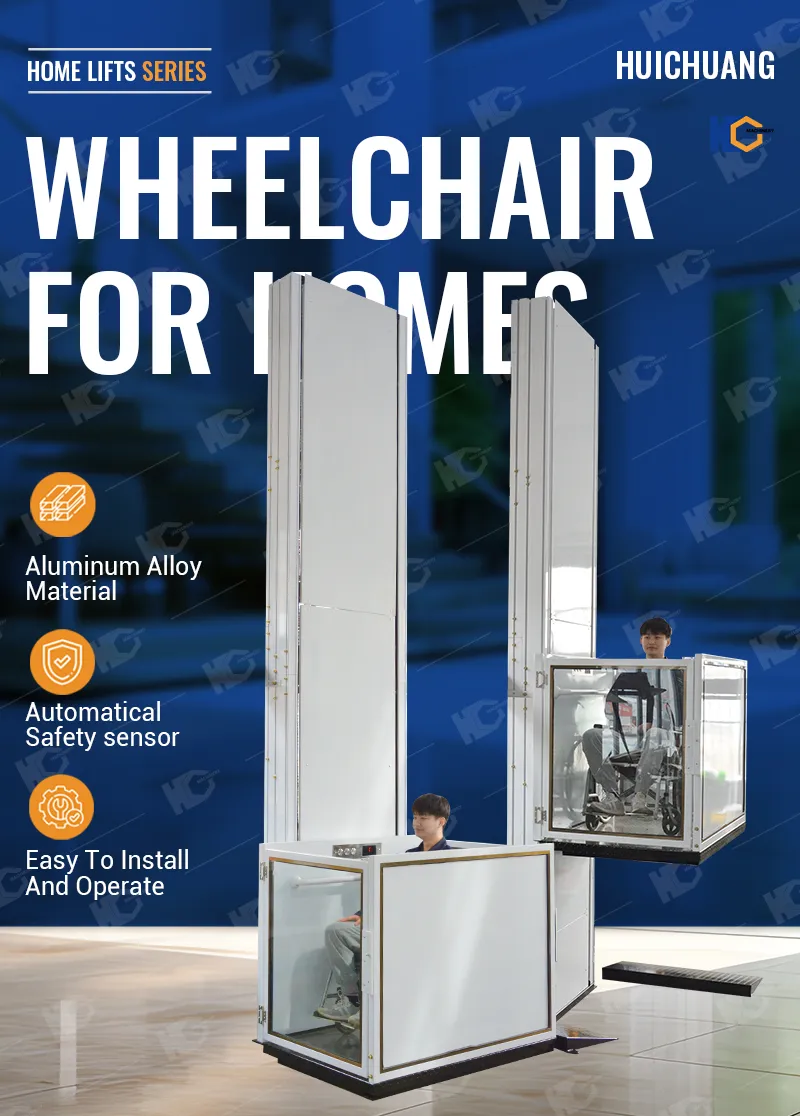
Specifications of Home Lifts for Disabled Individuals
Home lifts designed for disabled individuals must meet specific requirements to ensure they are safe, functional, and user-friendly. Here are the key specifications to consider:
1. Load Capacity
The load capacity of a home lift is crucial, especially when it’s intended for use by individuals who may be in a wheelchair or using other mobility aids. Most home lifts for disabled users have a load capacity ranging from 250 kg to 400 kg (550 lbs to 880 lbs). This capacity is sufficient to accommodate a wheelchair and a caregiver if needed.
2. Cabin Dimensions
The cabin size is one of the most important specifications to consider when selecting a home lift. For a lift to be accessible for wheelchair users, the cabin should be spacious enough to allow for easy maneuvering. A standard wheelchair requires a cabin size of at least 1100mm x 1400mm (43 inches x 55 inches). Larger cabins may be necessary if the user has a larger wheelchair or if additional space is required for a caregiver.
3. Door Width
The door width is another critical factor, as it must be wide enough to accommodate a wheelchair. Typically, a minimum door width of 900mm (35 inches) is recommended. This allows for easy entry and exit without the need for precise alignment. Sliding doors or automatic doors can further enhance accessibility by eliminating the need to manually open and close the door.
4. Drive System
Home lifts can be powered by different drive systems, each with its own advantages:
Hydraulic Drive: Known for smooth and quiet operation, hydraulic lifts are ideal for homes where noise levels need to be minimized. However, they may require a separate machine room for the hydraulic pump.
Traction Drive: These lifts use a counterweight system and are typically more energy-efficient. Traction lifts do not require a machine room, making them more space-efficient.
Screw Drive: Screw drive lifts are compact and do not require a machine room, making them suitable for homes with limited space. They are also relatively easy to install.
5. Control Systems
The control system for a home lift designed for disabled users must be intuitive and easy to use. Features such as large, tactile buttons, voice control, and remote operation can significantly enhance usability. Additionally, the lift should have emergency controls that are easily accessible, such as an emergency stop button and a battery backup to ensure operation during power outages.
6. Safety Features
Safety is paramount in home lift design. Key safety features to look for include:
Emergency Stop Button: Allows the user to stop the lift immediately if needed.
Safety Sensors: Detects obstructions in the lift’s path and prevents the door from closing on a user.
Automatic Emergency Lowering: In the event of a power failure, this feature allows the lift to descend to the nearest floor and open the doors.
Telephone or Intercom System: Enables communication with others in the house or emergency services if needed.
Non-Slip Flooring: Ensures that the wheelchair or user does not slip while entering or exiting the lift.
7. Customization Options
Customization is a critical aspect of home lifts for disabled users, as it ensures that the lift meets the specific needs of the individual and integrates seamlessly into the home environment. Customization options include:
Cabin Design and Finish: The interior of the lift cabin can be customized with different materials, colors, and finishes to match the home’s décor.
Seating Options: Some home lifts can be fitted with foldable seats for users who may not be in a wheelchair but require assistance with mobility.
Handrails: Installing handrails inside the lift can provide additional support and safety for users.
Flooring: Choose from a variety of flooring materials that offer both aesthetics and functionality, such as non-slip vinyl or rubber flooring.
Lighting: Custom lighting options can be added to ensure the cabin is well-lit and welcoming. LED lights are energy-efficient and provide a bright, even light.
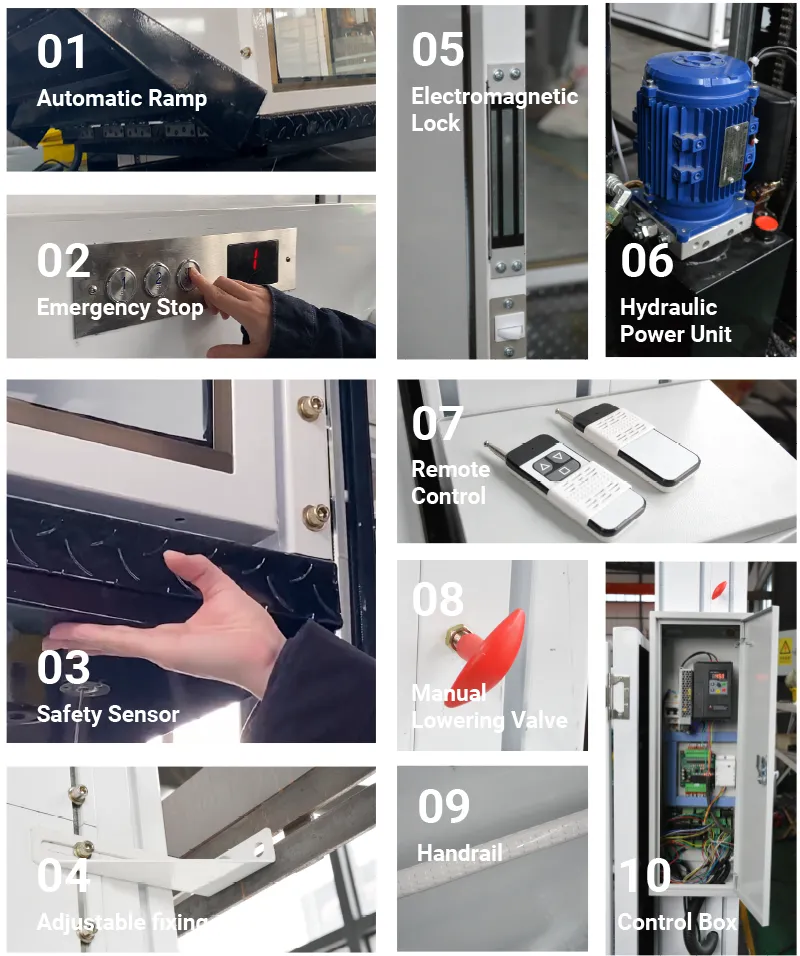
Pricing of Home Lifts for Disabled Individuals
The cost of installing a home lift for disabled individuals can vary widely based on several factors, including the type of lift, its specifications, and the level of customization. Here’s an overview of the typical price range:
1. Basic Models
Basic models of home lifts with standard features and limited customization typically start at around $15,000 to $25,000. These lifts are often screw drive or traction drive systems and are designed for straightforward installations with minimal structural modifications.
2. Mid-Range Models
Mid-range models, which offer more advanced features such as hydraulic drives, larger cabins, and additional safety features, generally cost between $25,000 and $40,000. These lifts may include options for customization in terms of cabin design, control systems, and additional accessories.
3. High-End Models
High-end home lifts, which include luxury finishes, extensive customization options, and advanced technology (such as smart home integration), can cost between $40,000 and $60,000 or more. These models are often bespoke solutions tailored to the specific needs of the user and the home environment.
4. Additional Costs
In addition to the base cost of the lift, there are other potential expenses to consider:
Installation Costs: Depending on the complexity of the installation, costs can range from $5,000 to $10,000. Factors such as the need for structural modifications, electrical work, and integration with existing systems can all influence the final installation cost.
Maintenance Costs: Regular maintenance is essential to ensure the safe and reliable operation of the lift. Annual maintenance contracts typically cost between $300 and $600, depending on the type of lift and the level of service required.
Operating Costs: Home lifts are generally energy-efficient, with operating costs usually being quite low. On average, the electricity cost of running a home lift is about $10 to $20 per month.
How to Customize a Home Lift for Disabled Users
Customizing a home lift for a disabled individual is a critical step in ensuring that the lift meets all their specific needs and integrates seamlessly into their daily life. Here’s how to go about customizing a home lift:
1. Assess the User’s Needs
The first step in customization is to assess the specific needs of the user. Consider factors such as the user’s mobility level, whether they use a wheelchair, and if they require assistance with standing or sitting. This assessment will help determine the necessary specifications, such as cabin size, load capacity, and control systems.
2. Consult with a Professional
It’s essential to consult with a professional who specializes in home lifts for disabled individuals. They can provide valuable insights into the latest technology, safety standards, and design options. A professional can also conduct an assessment of your home to determine the best location for the lift and identify any potential challenges.
3. Choose the Right Drive System
Select a drive system that best suits the user’s needs and the home environment. For example, if noise is a concern, a hydraulic drive system may be the best option. If space is limited, a screw drive lift might be more appropriate.
4. Customize the Cabin Interior
The cabin interior can be fully customized to match the home’s décor and the user’s preferences. Consider options such as:
Wall Panels: Choose from different materials like wood, metal, or glass to create a stylish interior.
Lighting: Customize the lighting to ensure it’s both functional and aesthetically pleasing.
Control Panels: Opt for control panels with large, tactile buttons or voice-activated controls for ease of use.
Seating: Install a foldable seat if the user may need to sit during the lift’s operation.
5. Integrate Smart Home Features
For users who are comfortable with technology, consider integrating the lift with smart home systems. This can include features like remote operation via smartphone, voice control, and automated scheduling. Smart home integration can significantly enhance the user’s independence and ease of use.
6. Ensure Safety Features Are in Place
Safety should be the top priority when customizing a home lift. Make sure the lift is equipped with all necessary safety features, including emergency stop buttons, safety sensors, and a reliable communication system. Additionally, consider features like automatic door operation and anti-slip flooring to further enhance safety.
7. Plan for Future Needs
When customizing a home lift, it’s important to plan for the future. Consider the possibility of changing mobility needs and how the lift can be adapted over time. For example, installing a larger cabin now can accommodate potential future needs, such as the use of a different mobility aid or the need for a caregiver to accompany the user in the lift.
Conclusion
Home lifts for disabled individuals are not just a convenience; they are a crucial tool for enhancing independence, safety, and quality of life. By understanding the various specifications, pricing, and customization options available, you can make an informed decision that best meets your needs or those of your loved ones. Whether you’re looking for a basic model or a fully customized solution, there are home lifts available that can be tailored to your specific requirements.
Investing in a home lift is a significant decision, but it’s one that can provide long-term benefits for both the user and their family. With the right lift in place, individuals with disabilities can move freely and safely within their homes, reducing the physical strain on caregivers and enhancing the overall accessibility of the living environment.
About JNHC lift
JNHC Lift is a leading manufacturer of home lifts for disabled individuals, based in China. We specialize in designing and producing high-quality, reliable lifts that enhance accessibility and independence within residential settings. Our lifts are engineered to meet the specific needs of users with disabilities, offering safe, comfortable, and user-friendly solutions for navigating between floors.
With a focus on innovation and customization, JNHC Lift provides a wide range of options to suit various home environments and individual requirements. Whether you need a basic model or a fully customized lift, we ensure that each product meets international safety standards and delivers exceptional performance. We also offer comprehensive wholesale services, making us a trusted partner for businesses worldwide looking to provide top-tier accessibility solutions. At JNHC Lift, we are committed to improving quality of life through superior lift technology.
